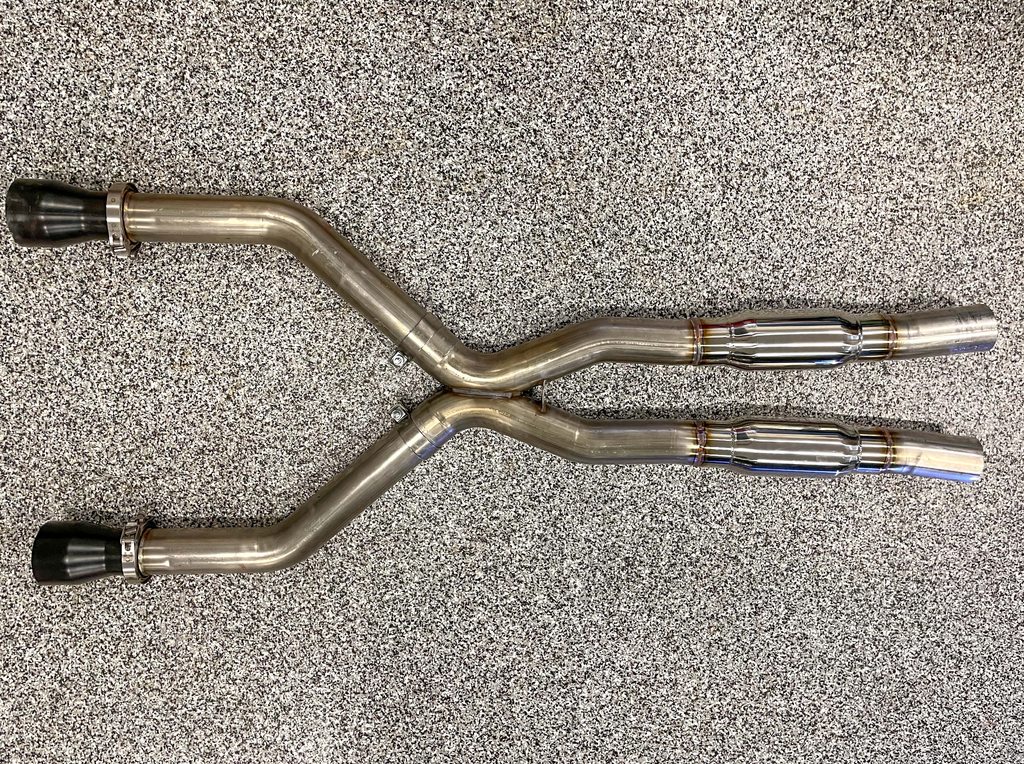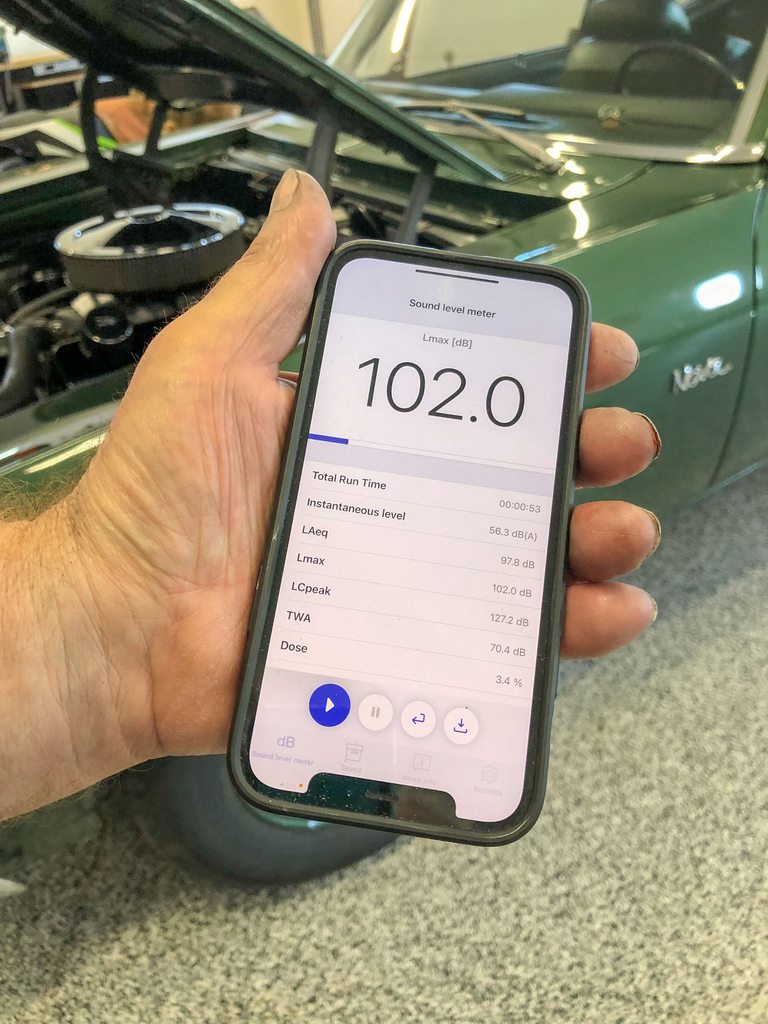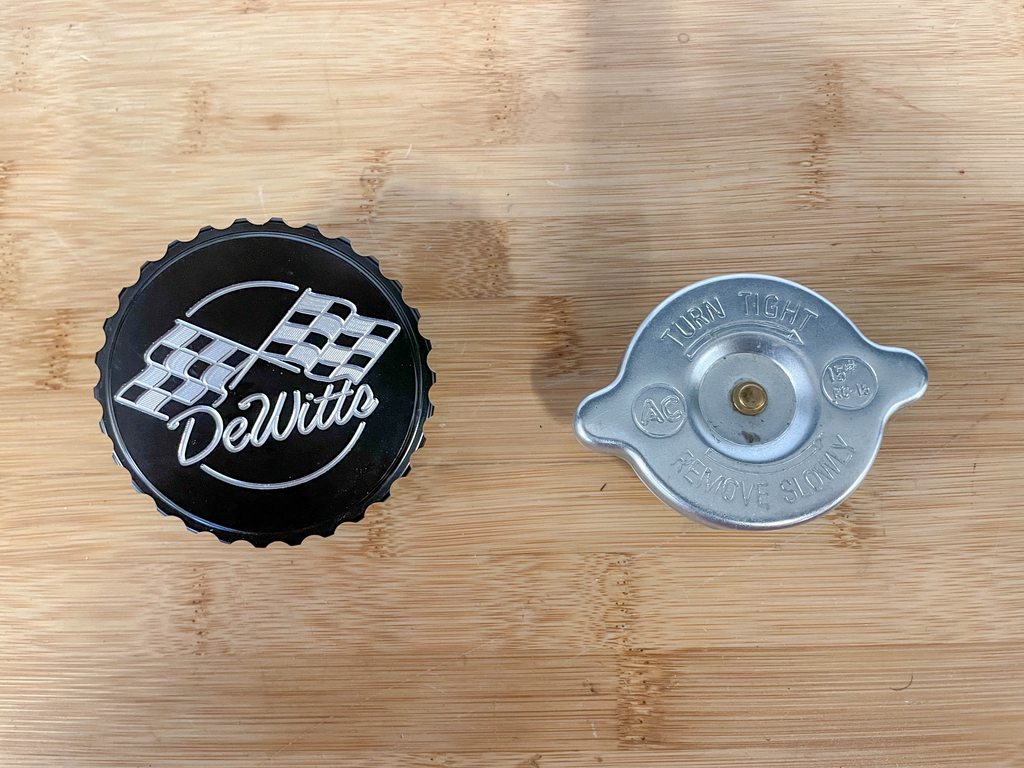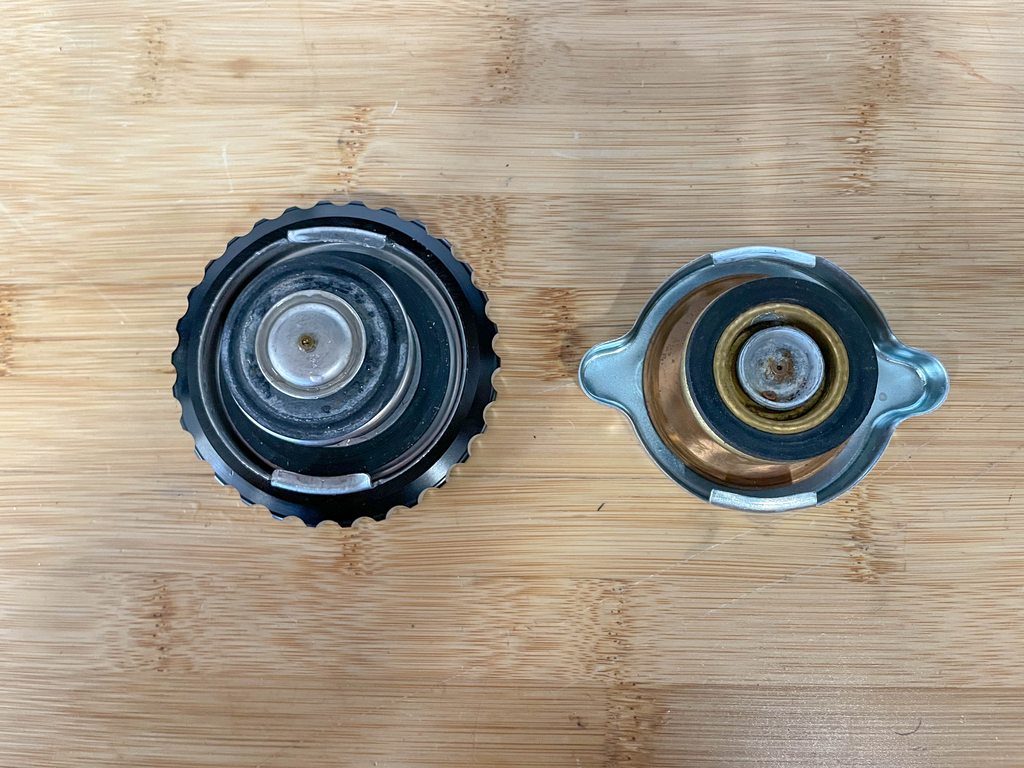

Dedicated to the Promotion and Preservation of American Muscle Cars, Dealer built Supercars and COPO cars. |
|
|||||||
| Register | Album Gallery | Thread Gallery | FAQ | Community | Calendar | Become a Paid Member | Today's Posts | Search |

|
|
|
Thread Tools | Display Modes |
|
#82
|
|||
|
|||
|
Now that NovaJane is staying with me, I decided to address one of my pet peeves (and also a brand spanking new legal issue): Noise! The car is (was) Loud! Essentially, the exhaust consists of race car style 2.25-inch primary tube headers that bolt into a 4-inch collector. From there, each side goes into a 4-inch into a 3-inch slip on reducer and then into a 3-inch exhaust system. The system is made up of a Hooker "X" style cross over and then into a set of 3-inch in and 3-inch out Hooker VR series mufflers (straight through with glass packing). Finally, it exits into 3-inch turndowns in front of the rear axle.
I had the exhaust pretty much nailed down when I moved from the west coast to the prairies. By the time I had the car finished, the province I live in established a new set of noise laws: Cars, light trucks and motorcycles must not be over 101.3 decibels. If the vehicle is below 103.3, you get by with a warning (all tests are on the L-Max scale from idle to 3,750 RPM). Over that dB number, it's a fail and you must fix it. There are several parameters that include where the test equipment is located in relation to the exhaust exit, along with others. So I decided to test my car:  L-max was 104.7. Fail! Oops...L-O-L Now what? I could add tailpipes, but they foul both the electric fuel pump and the home brewed ARB I made for the car. Can't use them. I decided to try a set of dB killing cone inserts in the exhaust. The holes in the cones have more surface area (combined) than the diameter of the pipe. There is very little exhaust restriction.  These cones can go almost anywhere, but they're most effective if they're close to the collector. So I installed mine in the reducers. The pointy end must face forward. Once installed, each cone was tacked in place (you can actually bolt them in as well).  Next up, my research pointed to using a set of resonators. My dilemma is the straight sections in the cross over aren't very long. Additionally, the exhaust runs very close to the big M-W aluminum driveshaft. That means the resonator body has to be short and relatively small in terms of diameter. So I came up with these straight through 3-inch in, 3-inch out, 4-inch body stainless jobs from Vibrant Performance:  I sliced open the exhaust and had a local shop TIG weld the resonators in place. This is the complete "new" system, less mufflers:  In order to tighten up the exhaust during the install, I used a ratchet strap hooked to the exhaust and anchored under the car to the front suspension cross member. Worked slick. Then I used a bottle jack to raise it up (it fits tight up under the car):  Once the mufflers were reinstalled, it was time to test it. I used the same parameters as the "before" test. The results were excellent! The cones and resonators work, without adding a whole bunch of restriction to the exhaust:  If I get stopped and sent to a test station, I'll remove the fan belt. Reason is, big block Novas with long water pumps have no room for a clutch fan. The direct drive fan is quite noisy. I figure running it less fan will should get me down to the legal limit...Worst case scenario is I will get by with a warning... 
Last edited by Arrowsmith; 09-15-2023 at 12:34 PM. |
| The Following 12 Users Say Thank You to Arrowsmith For This Useful Post: | ||
427 (09-22-2024), 69M22Z (09-15-2023), BJCHEV396 (09-15-2023), Dave Rifkin (09-16-2023), dykstra (09-15-2023), ls6owner (09-15-2023), markinnaples (09-15-2023), PeteLeathersac (09-15-2023), scuncio (09-15-2023), Steve Shauger (09-15-2023), Tenney (09-15-2023), Xplantdad (09-15-2023) | ||
|
#83
|
|||
|
|||
|
You didn’t miss it. I just fixed it. The “before” was 104.7. I edited it so many times last night, I edited it right out of there😉
|
|
#84
|
|||
|
|||
|
Here's something for everyone (I think !): I put my Nova together with a DeWitts aluminum rad. It's a beautiful sort-of-stock appearing piece. They also included a cool billet covered rad cap. But in my "stock appearing" mindset, I decided to swap the cap for a reproduction RC15. I never thought anything of it. But when I started driving the car a bit, I was plagued with what appeared to be runaway overheating. It was frustrating, but one day when it was hot, I put a towel over the rad cap to check to see if the coolant was disappearing. No hiss. No steam. Nothing. Further investigation revealed the reproduction cap wasn't seating on the rad neck. Obviously the cooling system wasn't holding any pressure. So I replaced the repro cap with the DeWitts' supplied cap. Bingo. I can park it outside on a 90-degree day, nosed up to the garage door, put it in park, let it idle and walk away without overheating. Instant cooling fix. I wonder how many other repro caps are like this?
 
|
| The Following 4 Users Say Thank You to Arrowsmith For This Useful Post: | ||
|
#85
|
|||
|
|||
|
I have a DeWitts aluminum radiator in my Beaumont. It didn't come with a DeWitts cap.
__________________
1968 Beaumont SD396 |
|
#86
|
|||
|
|||
|
Mine did but that's not the point.
Last edited by Arrowsmith; 09-16-2023 at 04:06 AM. |
|
#87
|
|||
|
|||
|
Yes, but I believe the problem is in the cap. Over the years it seems other folks have had similar issues with repro caps. It’s kind of a hit and miss situation from what I decipher. I suspect if I had a rad cap pressure tester, I could nail it down exactly, but honestly since it’s working correctly now, I don’t think I want to spend $$$ on the test equipment😉
|
|
#88
|
|||
|
|||
|
The DeWiits cap is pricey, but I’d first check to see if your system is pressurized correctly (Be careful man…). I was pretty frustrated with mine in traffic until I resolved it. By the way, I can now watch the temp change as the thermostat opens. That wasn’t possible before. It would just keep climbing until the traffic cleared up (or I shut the thing off). I’m currently using a 180 Stewart Thermostat, but I’d like to try a 160 example (I have a similar drilled Stewart on order).
|
|
#89
|
|||
|
|||
|
Not suggesting this for you, I'm sure I'd just be happy with the new cap, but someone could just plug a t fitting in the bypass hose and check pressure.
|
| The Following User Says Thank You to cheveslakr For This Useful Post: | ||
Arrowsmith (09-17-2023) | ||
|
#90
|
|||
|
|||
|
Quote:
I can't use it for my car because I don't use a bypass hose (no machined port in the intake). I use a drilled thermostat from Stewart. That part works great. |
 |
|
|